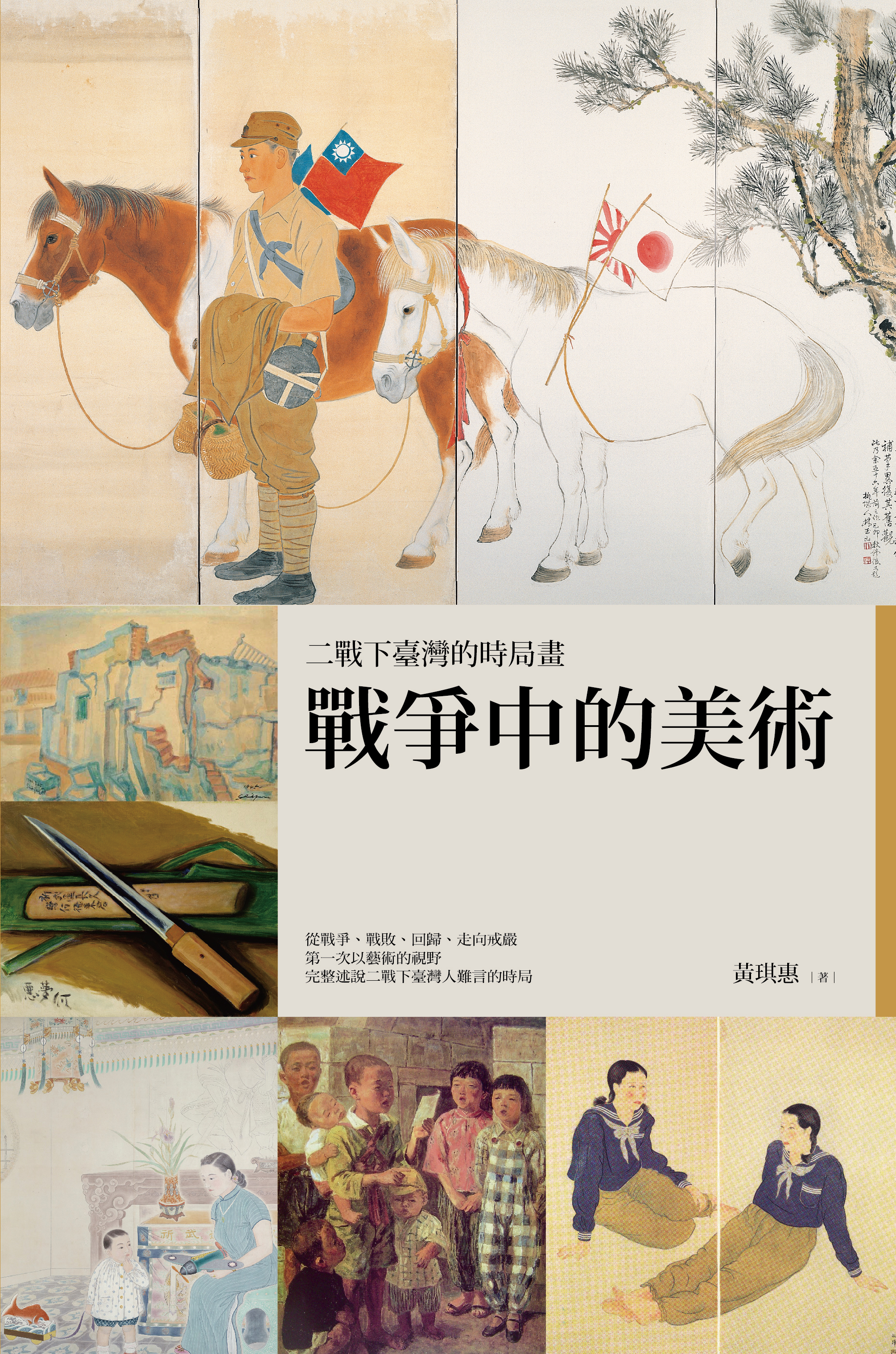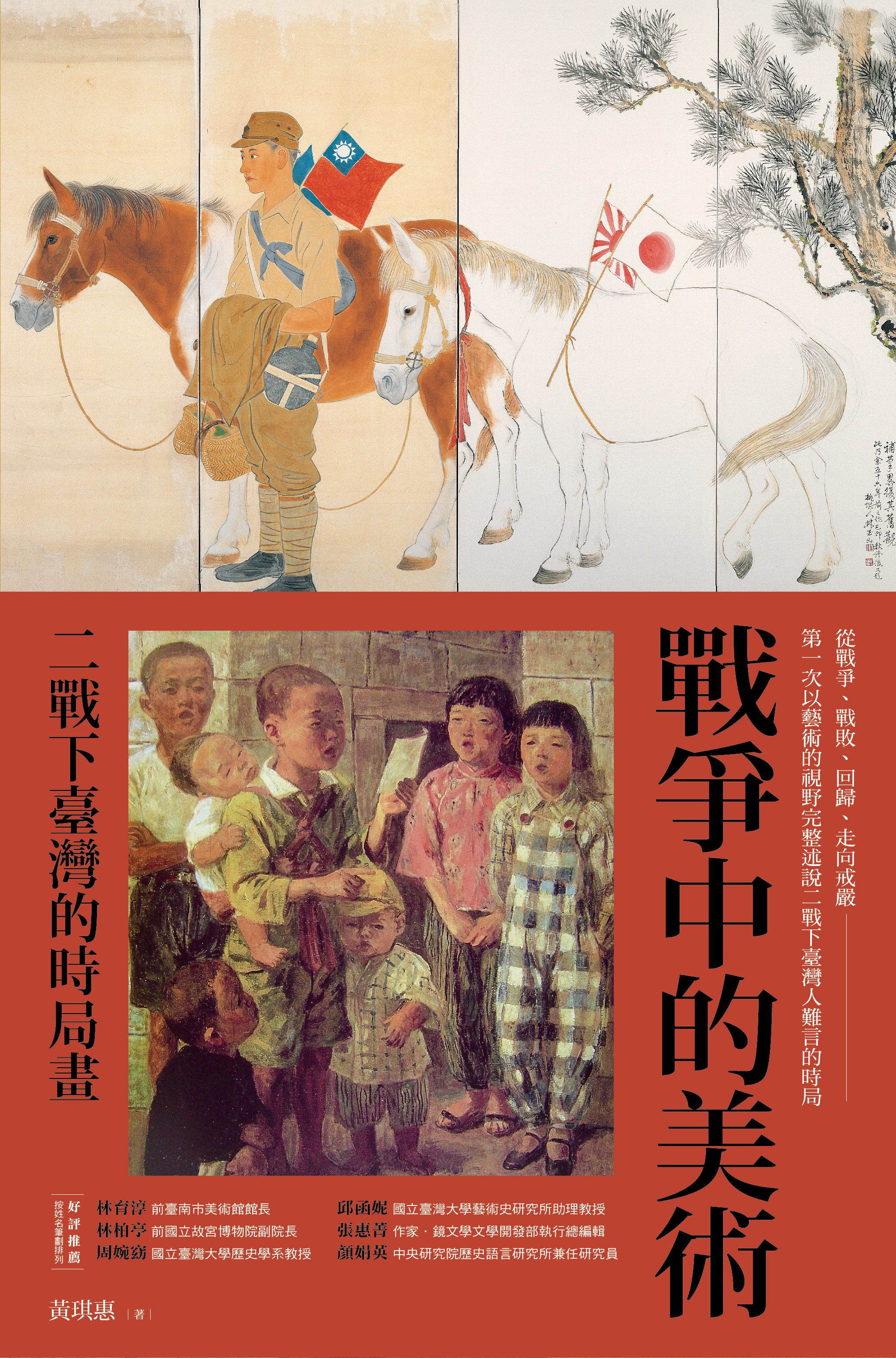戰爭中的美術:二戰下臺灣的時局畫
Art in Wartime: Situational Paintings in Taiwan During WWII
歷史/時代
2024 實體與數位同步
本書探討二戰時期臺灣藝術在日本「時局色」影響下的發展。1941年,總督府引進日本「聖戰美術展」,日本畫家途經臺灣,間接刺激了戰時藝術的興起。在日本當局的推動下,臺灣藝術家創作出呼應戰爭氛圍的作品,表面上順應時局,實則努力維持美術團體運作,持續推動展覽與創作。部分日本藝術家在臺灣的活動亦為當地藝壇增添多樣性。本書首次聚焦於臺灣的「時局畫」,透過視覺藝術的角度,解析藝術家如何在戰時壓力下尋求平衡,並在作品中映照個人掙扎與時代變遷。
This book explores Taiwan’s wartime art under Japanese rule, focusing on “Situational Art” that reflected wartime realities without overt battle scenes. It examines how Taiwanese and Japanese artists balanced artistic integrity and official expectations, revealing their struggles, resilience, and creative responses amid the pressures of Japan’s wartime propaganda.
作者介紹
-
作者
黃琪惠
黃琪惠 國立臺灣大學藝術史研究所博士,國立臺北藝術大學美術學系兼任助理教授。以臺灣美術史的研究、教學與推廣為人生志趣。著有《臺灣美術評論全集:吳天賞.陳春德》(1999)、臺南市美術館研究計畫案《西畫家翁崑德(1915-1995)生平與繪畫之研究》(2022)、《新竹藝術家系列:陳進》(2023)等,策展撰文《嘉邑.故鄉:林玉山110紀念展》(2018)、《手完成的話:時局下的李石樵人物畫》(2022)等,參與撰寫《不朽的青春:臺灣美術再發現》(2021)、《臺灣美術兩百年》(2022)等書。
作者介紹
-
作者
Chi-Hui Huang
Huang Chi-Hui holds a Ph.D. in Art History from National Taiwan University and is currently an adjunct assistant professor in the Department of Fine Arts at Taipei National University of the Arts. Her lifelong dedication lies in the research, teaching, and public engagement of Taiwanese art history. She is the author of Collected Art Criticism of Wu Tien-Chang and Chen Chun-Te (1999), and has led research projects including The Life and Painting of Western-Style Artist Weng Kun-Te (1915–1995) (2022), and Hsinchu Artist Series: Chen Chin (2023). Huang has curated and written for several exhibitions, such as Chiayi, My Hometown: The 110th Anniversary Exhibition of Lin Yu-Shan (2018), and If Hands Could Speak: Li Shih-Chiao’s Portraits in Times of Turmoil (2022). She has also contributed to collective publications including Immortal Youth: Rediscovering Taiwanese Art (2021) and Two Hundred Years of Taiwanese Art (2022).
作品簡介
本書探討二戰時期臺灣藝術在日本「時局色」影響下的發展。1941年,總督府引進日本「聖戰美術展」,日本畫家途經臺灣,間接刺激了戰時藝術的興起。在日本當局的推動下,臺灣藝術家創作出呼應戰爭氛圍的作品,表面上順應時局,實則努力維持美術團體運作,持續推動展覽與創作。部分日本藝術家在臺灣的活動亦為當地藝壇增添多樣性。本書首次聚焦於臺灣的「時局畫」,透過視覺藝術的角度,解析藝術家如何在戰時壓力下尋求平衡,並在作品中映照個人掙扎與時代變遷。
作品簡介
This book explores Taiwan’s wartime art under Japanese rule, focusing on “Situational Art” that reflected wartime realities without overt battle scenes. It examines how Taiwanese and Japanese artists balanced artistic integrity and official expectations, revealing their struggles, resilience, and creative responses amid the pressures of Japan’s wartime propaganda.
出版資訊
- 類型風格 歷史/時代
- 作品尺寸 17x26cm cm
- 作品集數 1集已完結
- 出版年份 2024
-
出版方式
實體與數位同步
- ISBN(實體) 9786267376249
- ISBN(數位) 9786267376225
- 適合年齡 不分年齡
- 是否為跨國題材 是,關於日本 、 是,關於歐美
- 作品規格(頁數) 160
- 作品規格(字數) 75,000
-
其他補充資訊
- 媒合目的 版權交易





